7 Famous Landmarks To Admire From A Distance—And 9 That Deserve The Close-Up
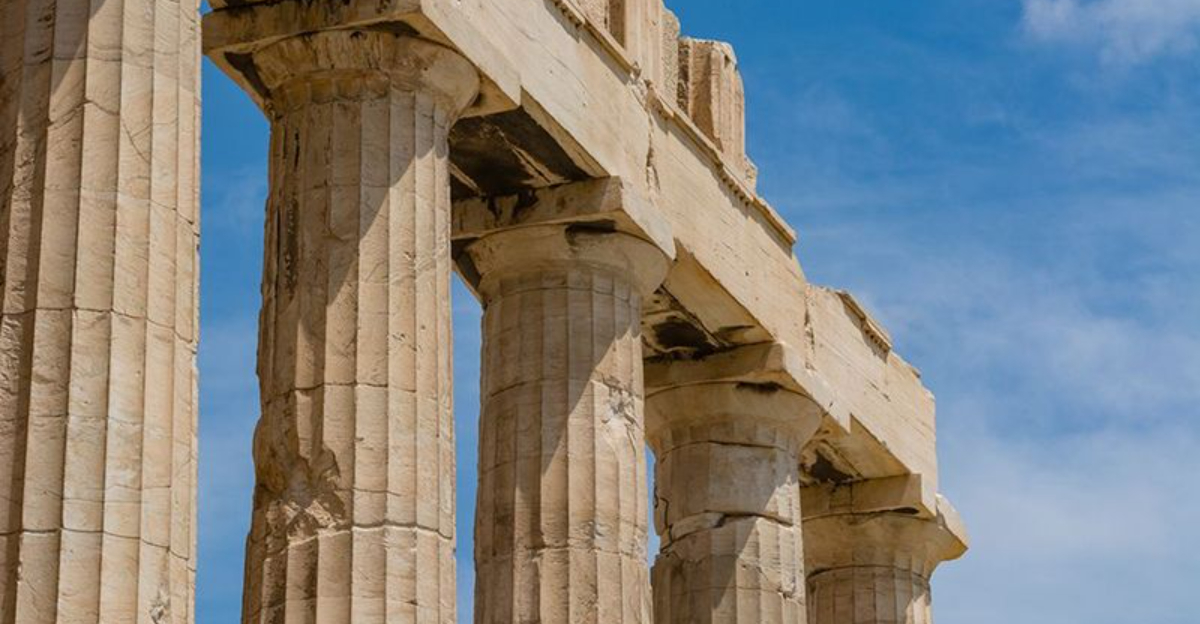
We’ve all been there—excited, jet-lagged, and ready for that jaw-dropping moment in front of a world-famous landmark… only to feel underwhelmed once you arrive. Maybe it was too crowded, under renovation, or just not what you’d pictured from the dreamy travel brochures.
But here’s what I’ve learned after chasing icons across continents: some places truly shine when admired from afar, while others don’t reveal their full magic until you’re standing right in the middle of it all.
I’ve climbed, queued, and craned my neck at dozens of these spots—and I’ve got the inside scoop on which ones live up to the hype and which might leave you wondering, was that it? So, which landmarks deserve a full-on visit, and which ones should you snap from a distance with a croissant in hand?
1. Hollywood Sign, Los Angeles (distance)

The iconic white letters perched on Mount Lee are much more impressive from afar than up close. Most people don’t realize you can’t actually touch the sign—it’s fenced off and protected by security cameras and park rangers.
Viewing the sign from Griffith Observatory or Lake Hollywood Park gives you that perfect postcard perspective that makes you feel like you’re living in a movie.
The hike to get near the sign is steep and challenging, and when you arrive, you’ll only see the back of the letters. Save yourself the sweat and enjoy this landmark from one of the many lookout points around the city.
2. Stonehenge, England (distance)
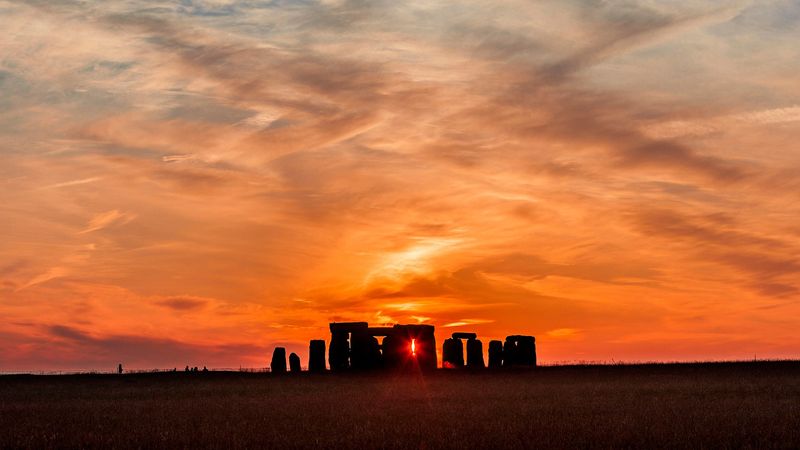
Those mysterious stone monoliths standing in formation on Salisbury Plain create a magical silhouette against the horizon. From a distance, Stonehenge appears almost mystical, especially at sunrise or sunset when light plays across the ancient stones.
Up close, you’ll find yourself shuffling along a roped pathway with hundreds of other tourists, kept several meters away from the actual stones. The magic diminishes when you’re part of a crowd struggling for photos.
The surrounding landscape is part of the experience, so viewing from nearby hills or even from your car on the A303 road captures the monument’s relationship with its environment.
3. Christ the Redeemer, Brazil (distance)

This massive statue standing with arms outstretched over Rio de Janeiro creates an unforgettable sight when viewed from below. From beaches like Copacabana or Ipanema, or from Sugarloaf Mountain, you’ll see the statue as it was meant to be seen—a guardian watching over the city.
The journey to the top involves crowded trains and hundreds of stairs. Once there, you’ll find yourself in a sea of selfie sticks, and the statue itself is hard to appreciate when you’re standing at its base.
The statue’s true majesty comes alive when seen against the backdrop of Rio’s stunning landscape, not when you’re craning your neck to see it up close.
4. Mount Rushmore, USA (distance)

The carved faces of four American presidents look most impressive when viewed from the main observation deck rather than trying to hike closer.
From this perfect distance, you can appreciate the scale and artistry of this massive sculpture carved into the Black Hills. Many visitors are surprised by Mount Rushmore’s smaller-than-expected appearance in person. The famous faces are about 60 feet high, but they can seem less grandiose than what we’ve seen in movies.
Evening viewings during the summer lighting ceremony add drama to the experience, with the illuminated presidents creating a patriotic tableau against the dark South Dakota sky.
5. Leaning Tower of Pisa, Italy (distance)
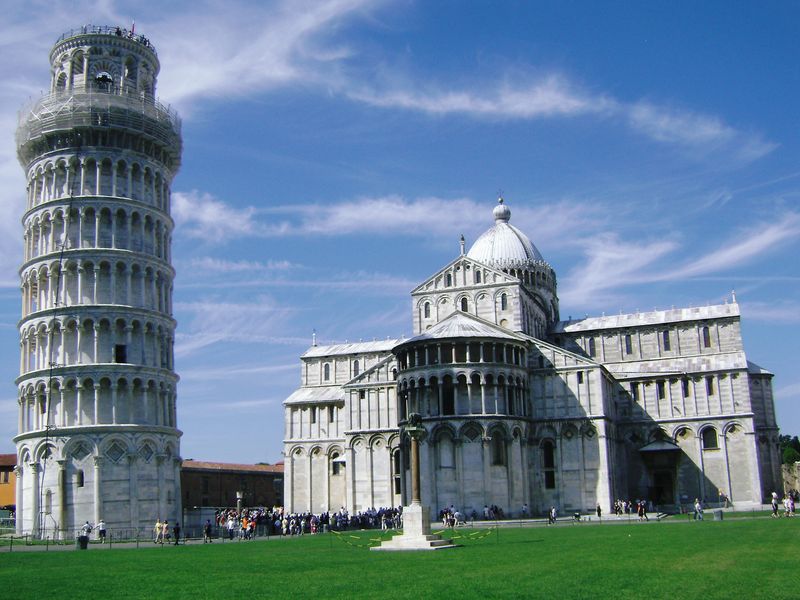
The famously tilted tower creates a more striking impression when viewed from across the Field of Miracles. From this vantage point, you can fully appreciate its precarious lean against the backdrop of the cathedral and baptistery.
Climbing the tower costs around €20 and involves waiting in long lines for a brief experience. The interior is largely empty, and the narrow spiral staircase can trigger claustrophobia or vertigo for some visitors. Instead, grab a gelato and stroll around the perimeter.
You’ll enjoy watching tourists strike the classic “holding up the tower” pose while appreciating the beautiful Romanesque architecture without the hassle of climbing 294 worn marble steps.
6. Little Mermaid Statue, Copenhagen (distance)

Copenhagen’s famous bronze mermaid perched on her rock is notoriously underwhelming up close. Measuring just 4 feet tall, she’s smaller than most visitors expect, and the crowds jostling for photos can make the experience frustrating.
Harbor tours offer a more romantic view of this literary tribute. From the water, you’ll see her as sailors have for over a century—a wistful figure gazing out to sea, embodying Hans Christian Andersen’s bittersweet fairy tale.
The statue has been vandalized multiple times throughout history, sometimes even decapitated! Viewing from a boat also gives you a bonus tour of Copenhagen’s beautiful waterfront and colorful Nyhavn district.
7. Eiffel Tower, Paris (distance)
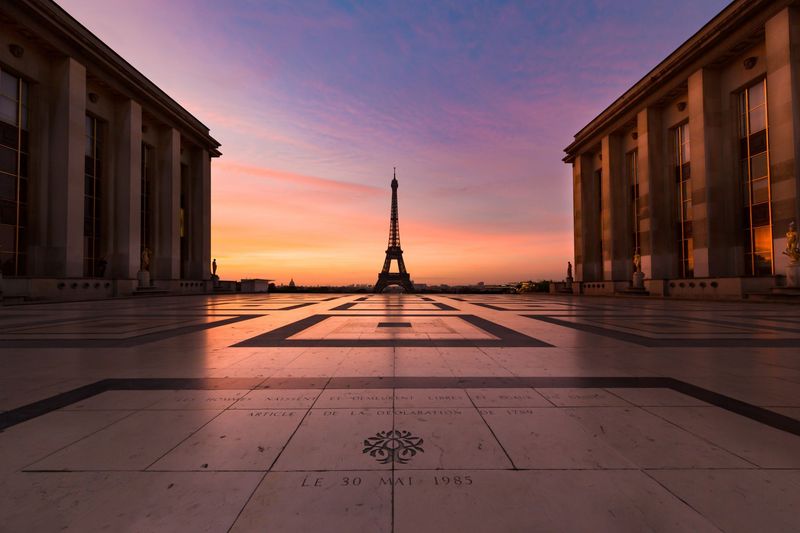
Paris’s iron lady shines brightest when admired from a distance. From the Trocadéro Gardens or along the Seine River, you can capture that perfect Parisian postcard moment without the crowds and long lines.
The tower’s intricate lattice design and elegant silhouette are best appreciated from afar. While going up offers city views, you’re missing the best part of the Paris skyline—the tower itself!
Wait until evening when the tower sparkles with thousands of twinkling lights for five minutes every hour. This magical light show is most enchanting when viewed from a distance, perhaps while enjoying a picnic on the Champ de Mars with a bottle of French wine.
8. Colosseum, Rome (close-up)
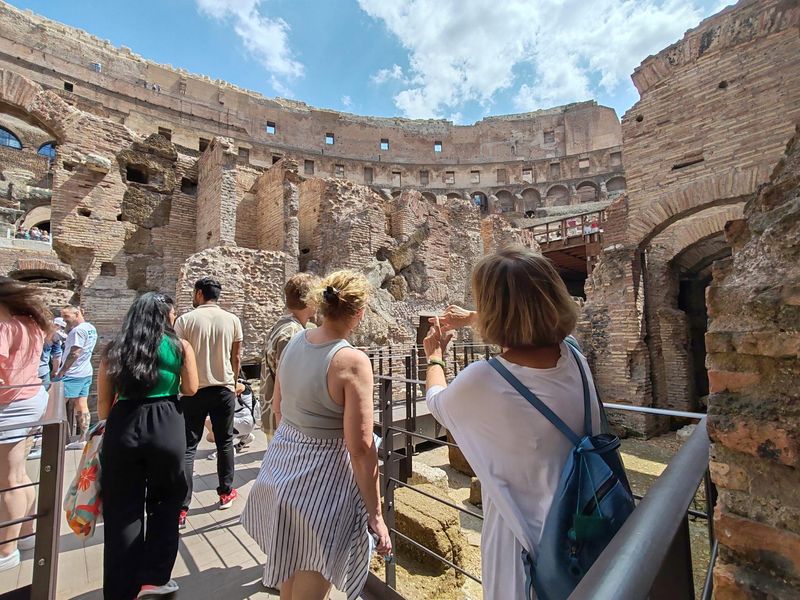
Walking through the ancient archways of Rome’s Colosseum transports you back 2,000 years in a way that distant views simply can’t match. Inside this massive amphitheater, you can almost hear the roars of 50,000 spectators and imagine gladiators preparing for battle.
The engineering genius becomes apparent up close—the complex system of corridors, the remains of the hypogeum (underground chambers), and the sophisticated design that allowed for quick filling and emptying of crowds. Recent renovations have opened previously restricted areas.
If possible, book a special access tour that includes the underground and third tier. These areas offer intimate glimpses into the building’s history and function that you’d completely miss from outside.
9. Taj Mahal, India (close-up)
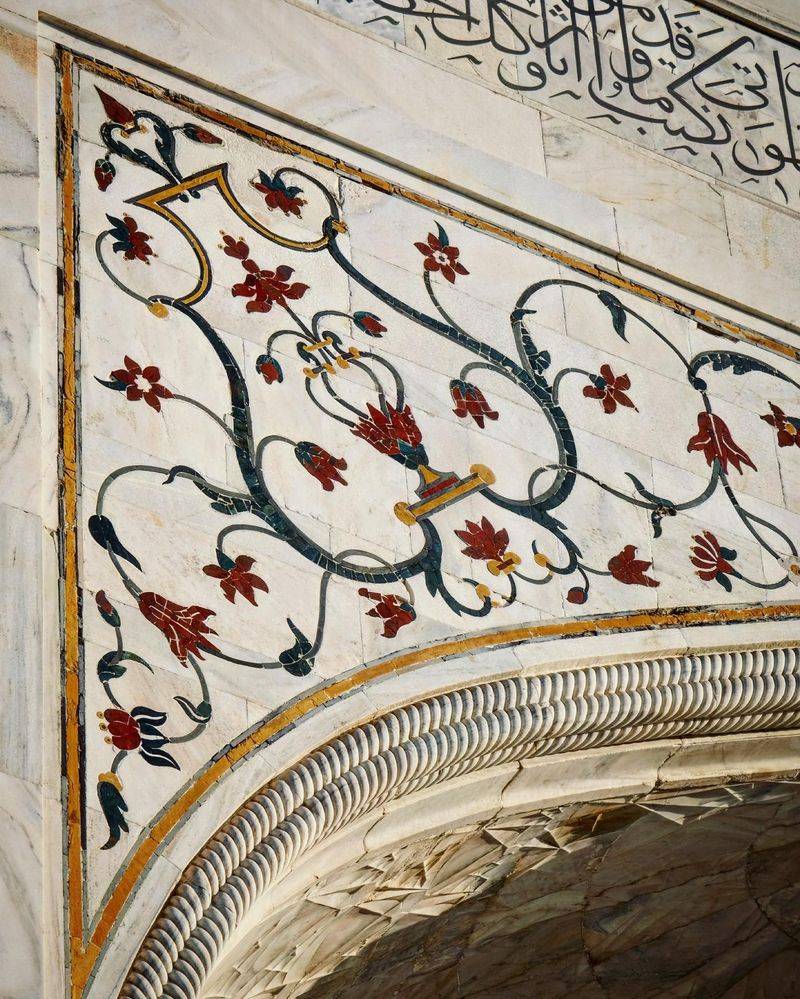
Photos never capture the true magic of the Taj Mahal—its perfect symmetry and the way light plays across the white marble throughout the day. As you approach through the main gate, the monument slowly reveals itself in a theatrical display that’s worth every penny of the entrance fee.
Up close, you’ll discover intricate details invisible from afar: semiprecious stones inlaid in floral patterns, calligraphy of Quranic verses, and marble screens so delicately carved they resemble lace. The craftsmanship becomes more impressive with every step closer.
Early morning visits reward you with fewer crowds and the possibility of seeing the marble change from pink to brilliant white as the sun rises. This is a monument that exceeds expectations up close.
10. Machu Picchu, Peru (close-up)
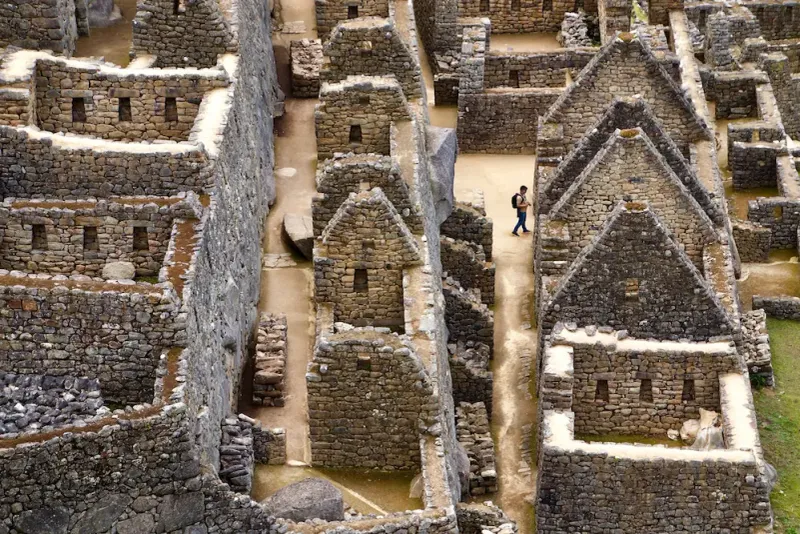
The famous postcard view of Machu Picchu from the Sun Gate is breathtaking, but walking among the ancient stone buildings reveals a whole new dimension of this Incan citadel. Up close, you’ll marvel at the precision stonework—massive blocks fitted together without mortar, yet still standing after 500+ years.
Wandering through temples, homes, and agricultural terraces gives you a sense of daily life in this mountain sanctuary. The site’s harmony with its natural surroundings becomes more apparent as you notice how structures align with astronomical events and mountain peaks.
Hiring a guide is worth it to understand the purpose of each building and the sophisticated engineering that created water channels and earthquake-resistant foundations at this high altitude.
11. Angkor Wat, Cambodia (close-up)

While the silhouette of Angkor Wat reflected in its pools at sunrise is iconic, the true wonder of this massive temple complex reveals itself when you step inside. The walls come alive with over 3,000 heavenly nymphs (apsaras) carved in stone, each with a unique hairstyle and pose.
Massive bas-reliefs stretching for hundreds of meters tell stories from Hindu mythology and historical battles. Without getting close enough to trace these carvings with your eyes, you’d miss the artistic achievement that makes Angkor truly special.
Climb the steep central tower (when open) to appreciate the temple’s perfect symmetry and symbolic layout representing Mount Meru, the home of the gods in Hindu cosmology. The architectural details get more impressive the deeper you explore.
12. Petra, Jordan (close-up)
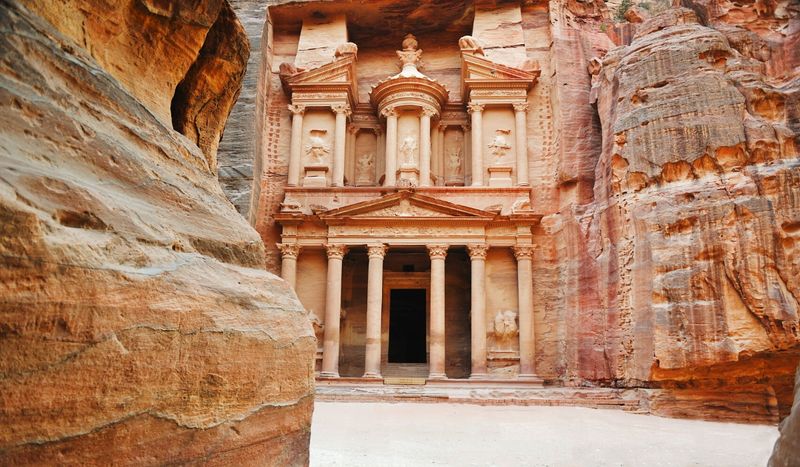
The first glimpse of Petra’s Treasury through the narrow Siq gorge is unforgettable, but this ancient city has so much more to offer beyond that famous façade. Up close, you’ll discover the Treasury’s details were carved directly into the rose-colored sandstone cliff face—not built block by block.
Hiking further into the site reveals hundreds more tombs and buildings in various architectural styles, reflecting Petra’s history as a crossroads of civilizations. The colors in the rock are mesmerizing—bands of pink, red, yellow, and white that seem to shift with the changing sunlight.
Don’t miss climbing to the Monastery or High Place of Sacrifice for spectacular views across this vast archaeological site that was once home to 20,000 people.
13. Sagrada Família, Barcelona (close-up)

Gaudí’s unfinished masterpiece might look like a melting sandcastle from afar, but step inside and you’ll understand why it’s worth the ticket price.
The interior forest of tree-like columns branches out to support the ceiling, creating an ethereal space unlike any other church in the world. The stained glass windows are strategically designed to bathe the interior in a progression of colors throughout the day—cool blues and greens in the morning, warming to golden hues in the afternoon. This play of light transforms the white stone into a living canvas.
Construction began in 1882 and continues today, giving visitors the rare opportunity to see skilled artisans at work on a cathedral using both traditional techniques and modern technology. The projected completion date is 2026.
14. Acropolis, Athens (close-up)

The hilltop citadel dominating Athens’ skyline looks impressive from below, but climbing up reveals architectural achievements that changed Western civilization.
Walking through the Propylaea gateway and standing before the Parthenon lets you appreciate the perfect proportions and optical illusions built into the design. Subtle curves and angles create the illusion of perfect straightness—columns bulge slightly in the middle to appear straight from a distance, while the platform curves upward at the center to counter the optical illusion that would make it appear to sag.
Morning visits help you avoid both crowds and the intense Greek sun. Take time to explore the smaller temples surrounding the Parthenon, especially the Erechtheion with its famous Caryatid columns shaped as women.
15. Alhambra, Spain (close-up)
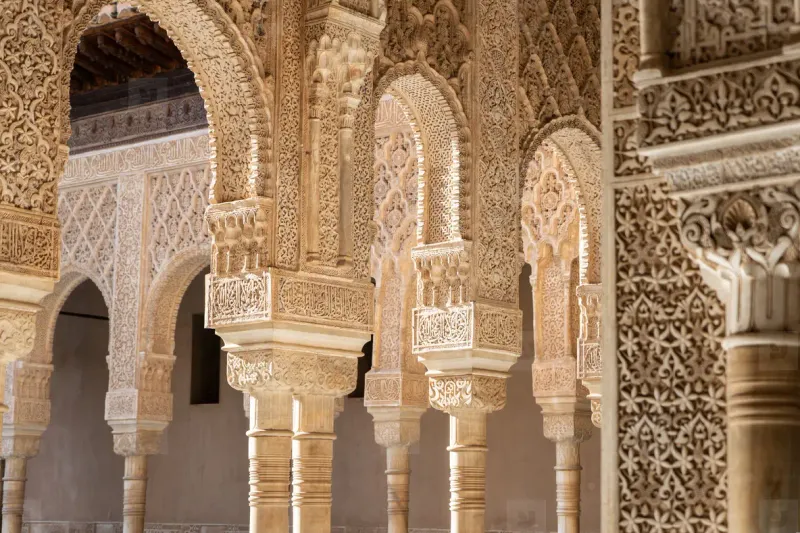
From afar, the Alhambra appears as a simple fortress on a hill overlooking Granada. Inside, however, you’ll discover one of the most exquisite examples of Islamic architecture in the world.
Room after room reveals incredible artistry—walls covered in intricate geometric patterns, ceilings resembling star-filled night skies, and courtyards designed to create perfect reflections in still pools. The Court of the Lions showcases the mathematical precision of Islamic design, with its perfect symmetry and clever water features.
Every surface tells a story through calligraphy, stylized plants, or geometric patterns representing the infinite nature of Allah. Audio guides help explain the sophisticated engineering that created natural air conditioning and acoustic effects throughout the palace complex.
16. Tower of London, UK (close-up)

The medieval fortress on the Thames might not look particularly impressive from the outside, but its 900-year history comes alive when you step through its gates. From the moment a Yeoman Warder (Beefeater) in traditional uniform begins your tour, you’re transported through centuries of royal intrigue, imprisonment, and executions.
The Crown Jewels exhibition dazzles with the world’s largest cut diamond and coronation regalia used by British monarchs for centuries. Walking the perimeter wall gives you glimpses into various towers where famous prisoners were held, including Anne Boleyn before her beheading.
The resident ravens add to the atmosphere—legend says if they leave, the kingdom will fall. Each has a name and personality known to the Ravenmaster who cares for them.
